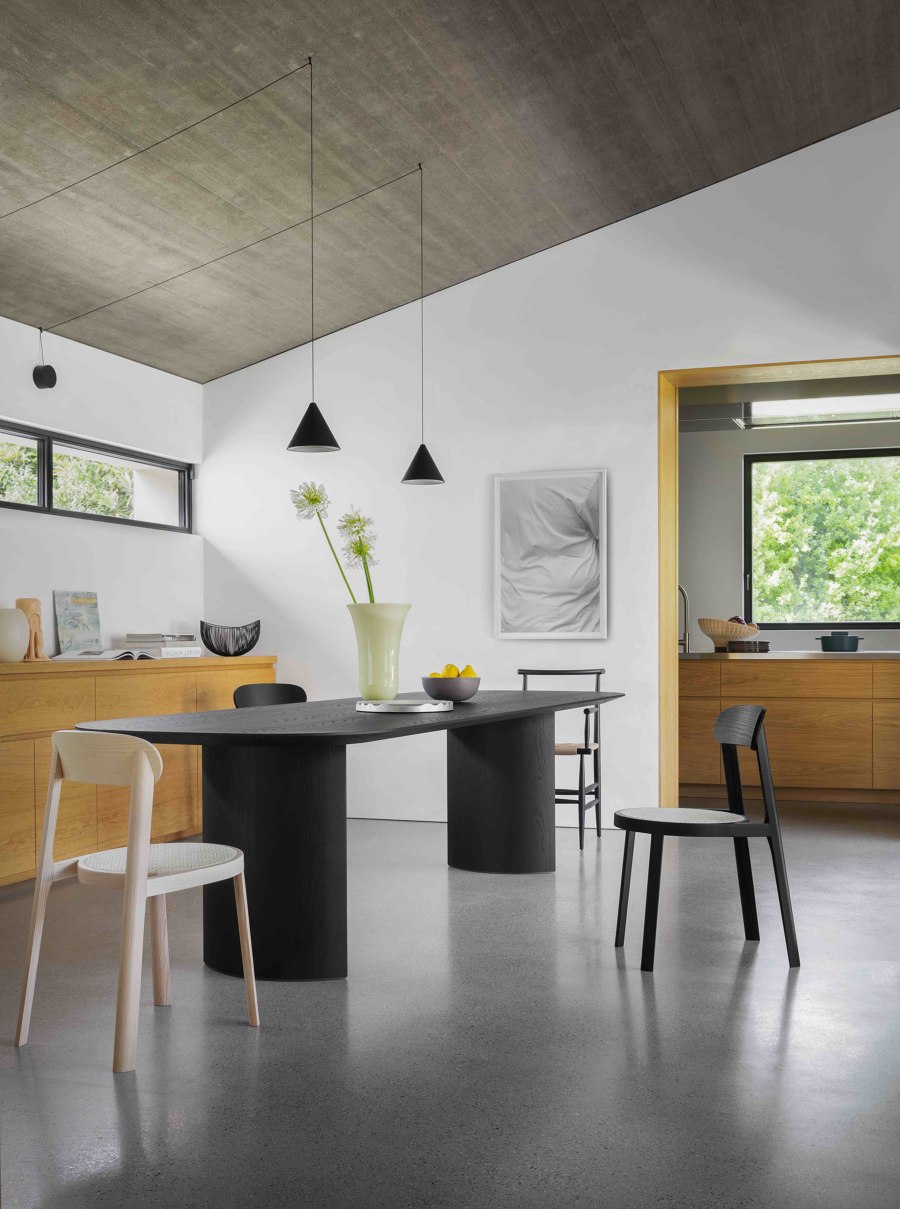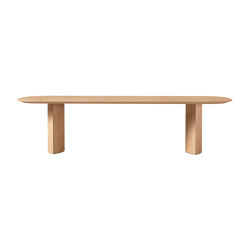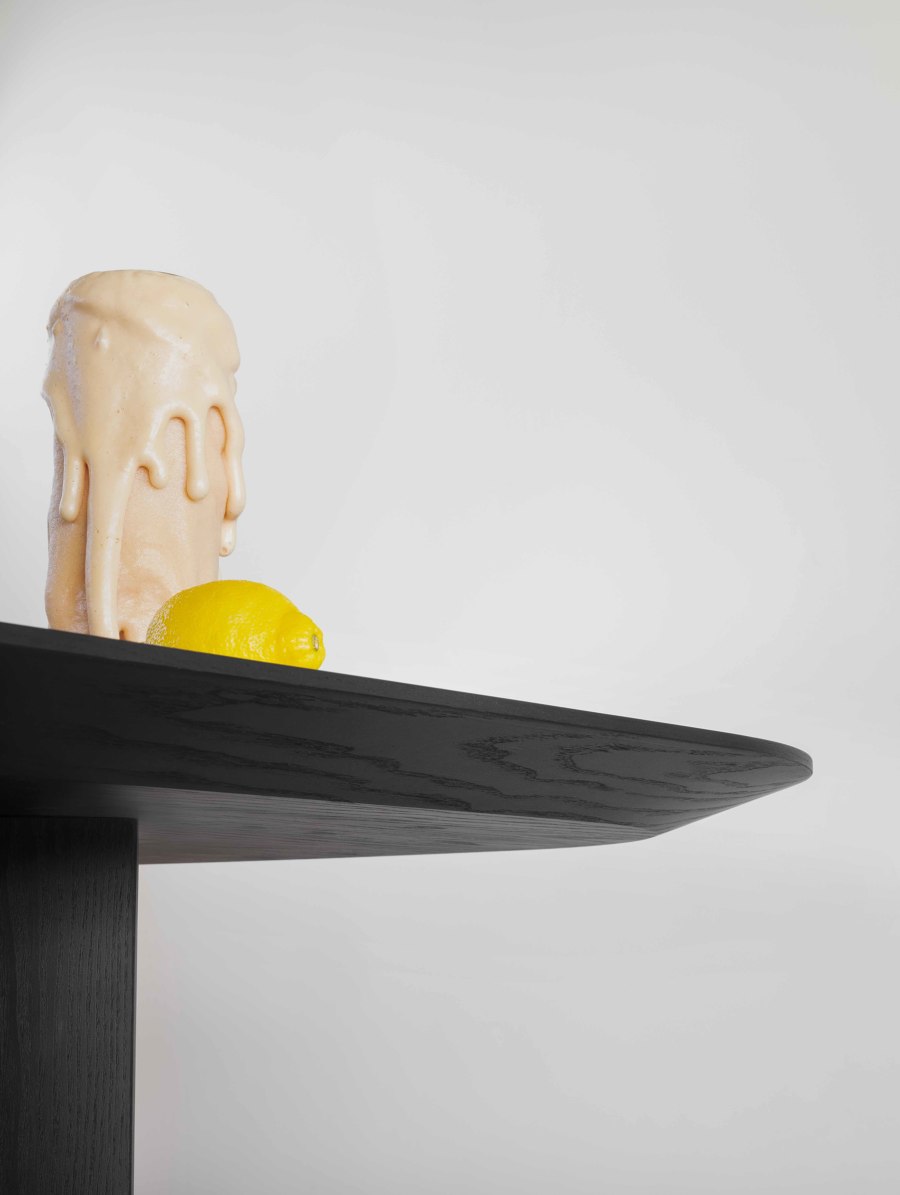Miniforms serves up the monolithic Plauto table
Scritto da Dominic Lutyens
London, Regno Unito
02.02.22
The fluid functionality of Paolo Cappello and Simone Sabatti's Plauto table for Miniforms takes sculptural inspiration from ancient monuments.
The monumental Plauto table by Paolo Cappello and Simone Sabatti has monolith-inspired legs
Functionality and good looks effortlessly co-exist in many of the best examples of 20th century Italian design. Notable among these is Achille Castiglioni’s practical yet handsome Leonardo trestle table of 1969 that rests a plain rectangular top on practical, height-adjustable legs. And Superstudio’s Quaderna table of 1970 – a minimal form overlaid with a fine black grid – combines neutrality and functionality with a strong presence. To this day, interior designers and architects are drawn to Quaderna’s monochrome, graphic style and blocky simplicity, finding it appealingly timeless.
Similarly fusing functionality and high style is Plauto, a new, versatile table dreamt up by Verona-based designers Paolo Cappello and Simone Sabatti for Italian furniture company Miniforms. The table is strikingly simple and has a monumental presence. It’s not surprising to learn that one of its inspirations is the ancient stone monolith. Plauto, in fact, comprises two monolith-like legs, surmounted by a generously sized top with curved ends.
Top: A Detail of Plauto in graphic black ash. Above: The sculptural table fuses arcs and straight lines
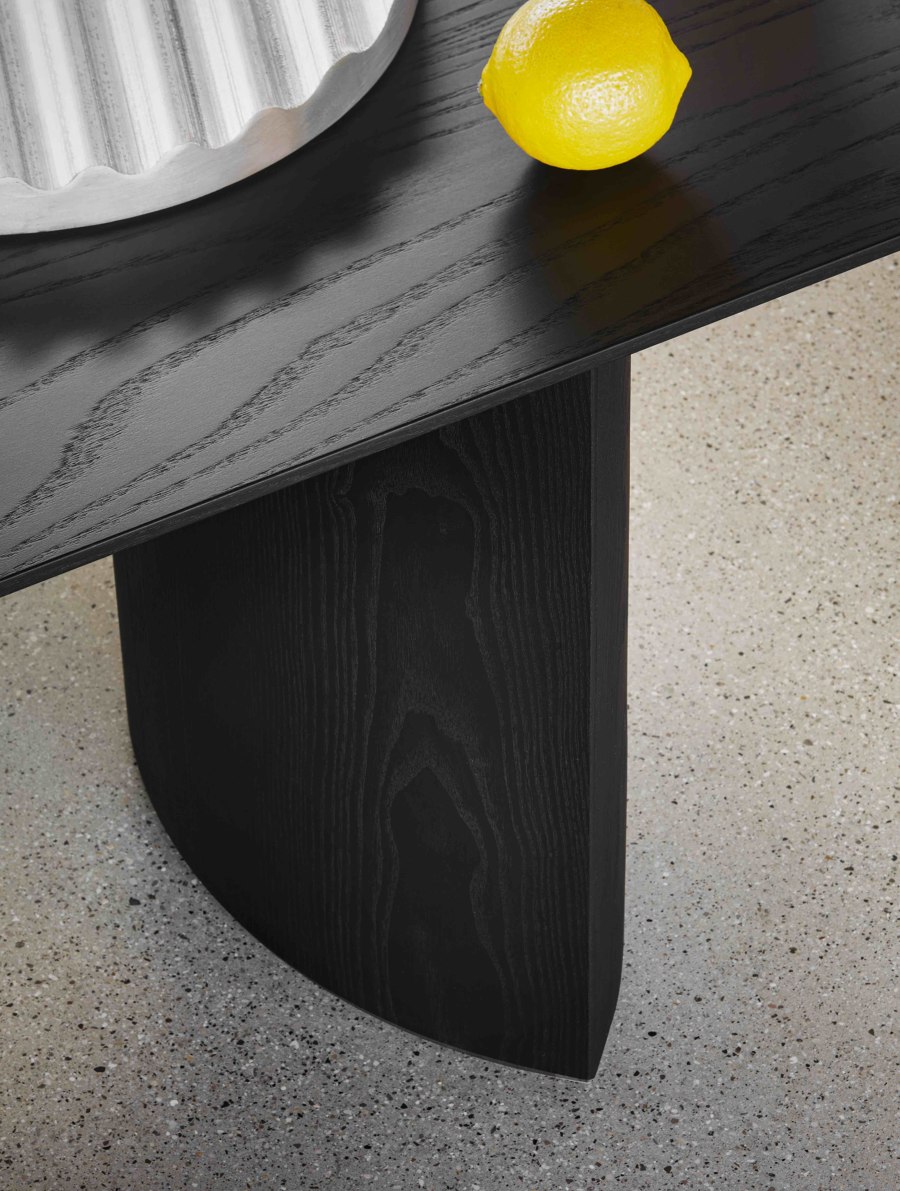
Top: A Detail of Plauto in graphic black ash. Above: The sculptural table fuses arcs and straight lines
×'Our aim was to create a very elemental, simple table that reduced its elements as much as possible,' says Cappello. 'It counterbalances straight lines with arcs. With all our designs, we avoid creating anything that looks overdesigned or overdecorated.' Yet for the designers it was important that the table wasn’t so stripped-down and understated as to look bland: 'Although it’s simple, we want it to stand out, to be recognisable,' they say.
With its three masses – two vertical legs supporting a slab-like horizontal top – the table has an architectural quality reminiscent of an arch or even a dolmen. In fact, Cappello says that they had 'columns' in mind when designing the table’s broad, robust legs. They also see Plauto as having a 'sculptural' quality that transcends pure functionality: 'We wanted the table to look like a small sculpture when placed in a living room.' More specifically, Plauto recalls an abstract sculpture. And although the table is symmetrical, its pronounced curves give it an organic air.
Plauto in flamed oak gives the table a lighter, airy look, enhanced by the table top’s slender edge
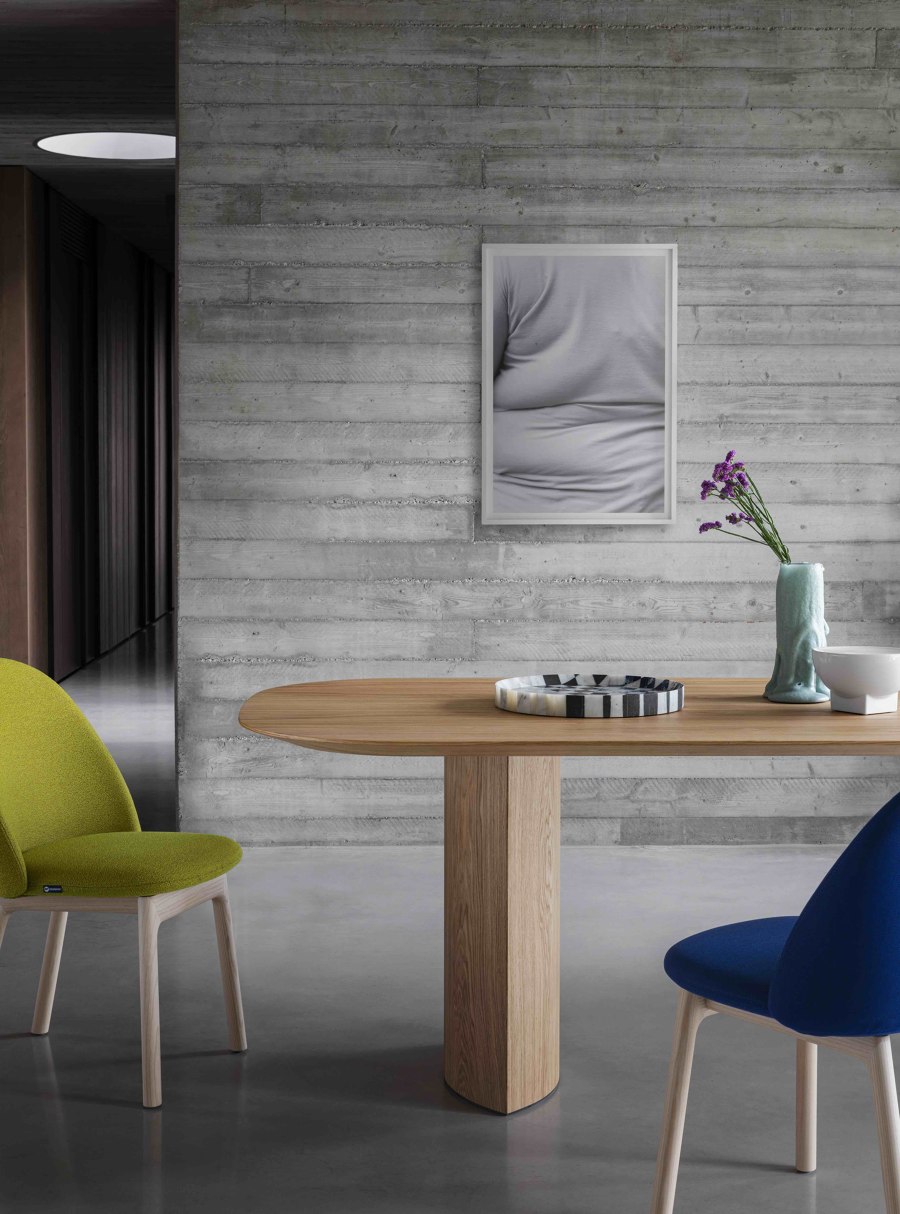
Plauto in flamed oak gives the table a lighter, airy look, enhanced by the table top’s slender edge
×Cappello points out that his Jumbo desk, also designed for Miniforms, has a similarly sculptural quality. Yet Plauto doesn’t look heavy or imposing thanks partly to its top, whose underside curves upwards where it meets the outer edge, resulting in a slender profile. Plauto’s legs, too, avoid looking bulky or cumbersome since they are formed of two curved sections that converge to create a sharp, straight edge.
While recalling the abstract, organic sculptures of such 20th century artists as Barbara Hepworth, say, or Jean Arp, the table doesn’t exude formality. For the designers, warm, tactile wood – available in a light, mid or dark tone (flamed oak, Canaletto walnut or black ash respectively) – was the obvious choice of material for the piece. 'We chose wood as it’s warm and natural,' they say. 'We didn’t want the piece to look at all cold.'
The expansive, versatile Plauto is adaptable to several uses and different settings
While projecting a distinctive character, Plauto’s simplicity – its binary juxtaposition of curves and straight lines – gives it a neutrality that they believe will appeal to architects and interior designers: 'Another quality of Plauto is that it’s chameleonic. It could be used as a living room, dining room or kitchen table. And it could function just as well as a desk in a home office.' Although they hesitate to describe Plauto as multifunctional, they see it as adaptable to many styles of interior, from the sleek and contemporary to the more classical.
Like an abstract sculpture whose impact derives from its interplay of volumes and voids, Plauto counterbalances absence and presence to intriguing effect. It cleverly unites solidity with lightness, and has a different look depending on its wood tone, making it yet more suitable for many styles of interior.
© Architonic
